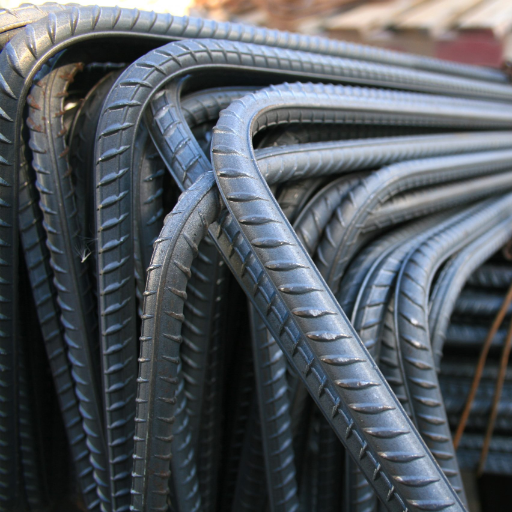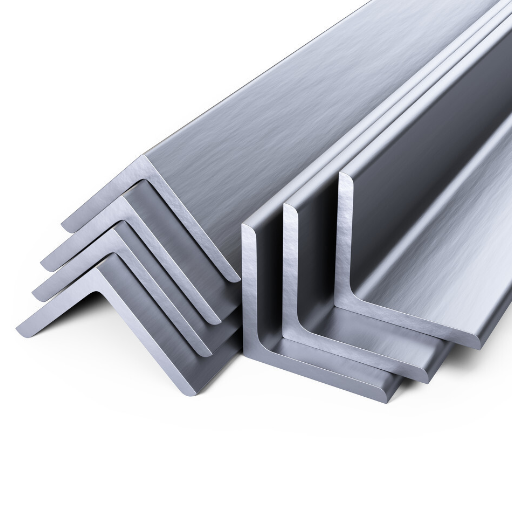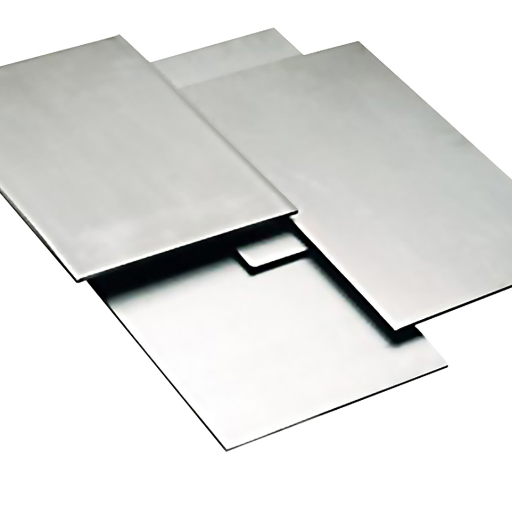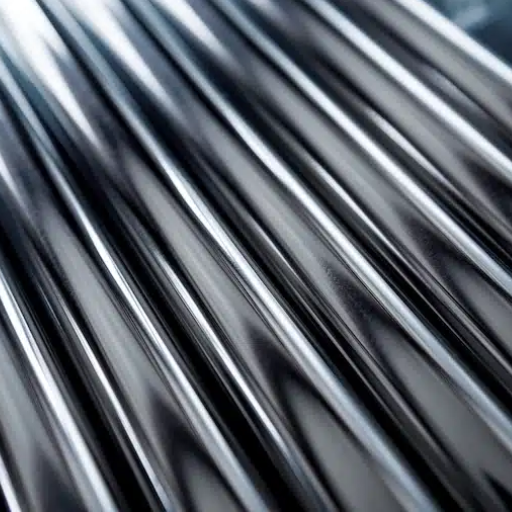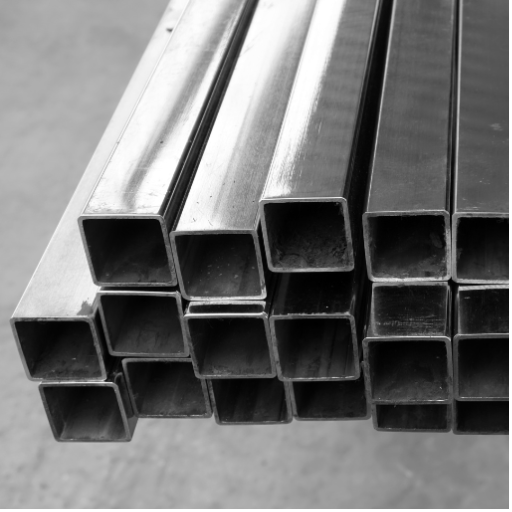The consideration of strength and endurance of metals places titanium and iron as two of the greatest contenders. Titanium is widely known to possess great strength allied to its low mass, its resistance to corrosion and its malleability. Whereas iron, when alloyed to steel, displays good versatility and tremendous mechanical properties. But can titanium really be referred to as the strongest metal? What about in terms of how it withstands factors like tensile stress, hardness, and even the environment? What would the result be when compared to iron?
This post aims to explain how both metals possess their unique characteristics by evaluating their composition, structure, and design features, as well as their practical applications across various sectors. We will show how their performance differs under a multitude of conditions, and resolve some of misconceptions surrounding their strength. By the end of the article, you will understand how exactly titanium and iron compare to one another, and will be able to formulate an approach towards their use in engineering and industrial applications.
What is the Composition of Metal Like Titanium?

Titanium is a transition metal and its symbol is Ti with 22 being its atomic number. As a metal, its atomic structure comes with a high strength-to weight ratio and is known to be resistant to corrosion and oxidation. Because of the processes capable of being achieved to pure titanium, trace elements of oxygen, nitrogen, carbon, and iron exist, while alloys incorporate Aluminum, vanadium, and molybdenum which strengthen the alloy, as well as increase temperature resistance and flexibility. Such compositional features allows for enhanced capability towards titanium, particularly inspace, medicine, and industry.
Understanding Titanium as a Metal
Titanium is well known for its unique strength in relation to its weight which makes it much lighter than steel yet strong. Its alloys is used in the automobile industry and the manned spacecrafts due to its alloy of low density and high strength. Another benefit of titanium is that it does not corrode, and this property is due to the alloy which is present in air when the metal is exposed to the atmosphere. In addition, titanium is used for a number of bone implants because of their light weight, usage in the body, and resistance to corrosion. Its melting temperature of 1,668°C (3,034°F) makes titanium a suitable component for structures that require strength in high temperature of aerospace engineering as well as power generation systems. Furthermore, its utility is augmented across industries due to custom designed titanium alloys tailored for integrating elements such as aluminum or vanadium to increase structural integrity, thermal stability, or specific mechanical requirements. With unreasonable attributes, titanium can conveniently be regarded as an essential material for emerging technological applications.
The Alloy Nature of Titanium
Alloying elements such as aluminum, vanadium, molybdenum, and iron are added to titanium to create new alloys with enhanced properties tailored to specific applications. Engineering alloys of titanium is one of the most sought after engineering feats along with optimizing the materials to improve the strength-to-weight ratio, steep increase corrosion resistance, and thermal stability. In the case of titanium-aluminum-vanadium alloys used in the aerospace industry, the strongest components in use today are the Ti-6Al-4V grades that are exceptionally lightweight. Furthermore, for extreme applications with aggressive solvents, titanium alloys with superior corrosion resistance are utilized in marine and chemical environments. The combined properties of titanium allow alloys to serve in domains where they have to withstand high levels of stress while functioning at peak-performance, giving them the edge over competing materials.
How to Form Titanium?
The processes for forming titanium are based on the metal’s extraordinary characteristics: its high strength, relatively low ductility at room temperature, and propensity to gall against tooling. Common techniques include forging, rolling and extrusion, all of which are performed at high temperatures to improve workability. Shaping titanium components is done between 800°C and 1150°C using a hot forming methods to avoid cracking. Other techniques such as superplastic forming, which employs high temperatures coupled with controlled strain rate, provides loose control of the material which allows for the accurate production of complex geometries. Moreover, the low thermal conductivity of titanium makes cutting operations require specialized tools due to the heat buildup which occurs during the machining. All methods are constrained to provide the required structural integrity and performance required for the intended application.
How Does Titanium Compare as the Strongest Metal?

Titanium has amazing properties. Out of all the metals we have, it possesses the best strength to weight ratio, which means that when compared to it’s density, titanium’s strength is incredible. Although not the strongest in terms of tensile strength, titanium is much stronger than dozens of metals. Weighing only marginally higher than aluminum, titanium alloys possess some of the most innovative features, including resistance to corrosion and incredible biocompatibility. This is the prime reason titanium’s useful lifespan and functional efficiencies not only extend but make it indispensable for the aerospace and medical sector and marine engineering precision devices that require both durability and performance. The balance of its features make it a uniquely usable metal with metals that are used in demanding applications.
Comparing Tensile Strength of Titanium and Iron
In comparing the tensile strength of titanium vs. iron, one should not disregard the fact that commercially pure titanium has a tensile strength, depending on the grade, between 240 MPa and 550 MPa. On the contrary, pure iron has a lower tensile strength of about 200 MPa. However, this value is simply surpassed by structural-grade steel, an iron alloy that has a tensile strength of approximately 400 MPa and soars to 2,000 MPa for high-performance alloy versions. In this aspect, titanium triumphs because its strength-to weight ratio is far more advantageous, especially in applications where every ounce matters. Iron alloys, particularly steel, however, are the dominant metals when unrestrained strength, cost, and efficiency are the primary concerns.
Is Titanium Stronger Than Iron?
The distinction made in regard of titanium and iron depends greatly in the context being analyzed and particularly the form with which they are dealing with, be it pure or alloy forms. In terms of tensile strength, titanium alloys do have an advantage as titanium boasts 434 MPa compared to iron’s 200 MPa. On the flip side, the latter does have structural grade steel, an alloy of iron which can reach 400 MPa – 2000 MPa. With many applications surpassing titanium’s use. Iron alloy composites do have the edge against titanium considering cost, availability, and sheer strength. Nevertheless, titanium alloys are the primary choice where excellent weight-to-strength ratio and corrosion resistance is needed.
Exploring the Strength-to-Weight Ratio of Titanium
This is the reason why titanium and its alloys are widely used in aerospace, medical, and precision engineering industries. The reason being the aviation industry is always-evolving requiring new and improved aircraft structures to be made, which makes the strength-to-weight ratio essential. Ranging from 860 to 960 megapascal, the tensile strength of titanium at 4.5 g/cm indicates low weight offers and unparalleled structural performance. Compared to metals like steel and Aluminum, titanium comes out as the most suited and efficient material with unmatched qualities. In addition, the corrosion stability gives extra life when the element is exposed to extreme environments which makes using it in severe industries very advantageous. The machining complexity and cost of using titanium tends to limit using it freely, however its the strongest engineering designs and solutions its the most suited.
What are the Properties of Titanium?

The titanium incredible combines power with weight, it is gentle. For instance, it has a greater ratio of strength to weight, being forged from certain steels makes it 45% lighter. Furthermore, it’s density is around 4.5 g/cm³ which is signifcantly lower than iron metals while still having stable mechanical structure. The resistance titanium has to corrosion is distinctively impressive because it creates an oxygen layer that protects strucutres from getting damaged in corrosion causing areas like sea water and chemically aggressive conditions. It has a good ability to be accepted by the body making it the perfect biocompatable device for medical uses included, idols. Other than that, titanium has the ability to survive dreadful temperatures and ensuring safety when used in extreme cold or when heated. This cements its roles in aerospace and plastic industries.
The Corrosion Resistance of Titanium
Corrosion resistance of titanium is largely due to its ability to develop a stable protective oxide layer on its surface. This TiO₂ (titanium dioxide) layer is able to prohibit the metal from coming into corrosive contact with seawater, strom chunks and oxidizing acids. This passive film, unlike others, is able to repair itself instantaneously if damaged, providing great corrosion protection. Research indicates that titanium can withstand long periods of time in eerie high salt and harsh chemical surroundings without losing any significant strength which is not the case with most metals. It’s ability to withstand elastity compared to alloys such as stainless steel strengthens the case for the use of titanium in critical infrastructures such as marine engineering, aerospace, and medical operations.
Yield Strength of Titanium vs Iron
Pure titanium has a yield strength of 275 MPa, Grade 2 exhibits yield strength that can reach 1100 MPa, and industrially pure titanium alloys (Ti-6Al-4V) could go up to 1100 MPa. The yield strength of iron in its pure form is around 50 MPa which is less than commercially available structural steels A36. Steels have yield strengths of 250 MPa, whereas, many alloys of titanium possess greater yield strengths. This caption emphasizes the disparity in the ratio of strength to weight in titanium making it suitable for regions where power and lightweight features are preferred such as aerospace eyeglasses and industrial machinery.
The Density of Titanium
Standing at a medal rank of 4.5 g/cm³, titanium certainly has seems to be positioned as one of the lightest structural metals copper, which places it at 7.8 g/cm³. While it’s true that titanium disposes around 60% more weight than aluminum (2.7 g/cm³). But it does offer formidable strength. This increase in weight does enable titanium industry-leading mechanical properties while still retaining lightness, which makes it able to help apply powering aerospace, medicine, and big engineering.
Why is Titanium and Steel a Common Comparison?

The mechanical properties of titanium and steel give rise to approaches of comparing the two metals. Both have their importance in certain areas of engineering and industrial uses. To being with, steel is popular because of its immense strength, sufficient durability, and cost efficiency. Thus, it becomes a go to resource for construction and manufacturing. Then there is titanium which does not lag behind as it also offers great advantages such as high strength-to-weight ratio, corrosion resistance, and biocompatibility. This makes titanium very important in aerospace, medical mediums, and other high-performance industries. More comparison centers on getting the best outcome balancing these materials materials with respect to weight, cost, and usage.
Comparing Steel Alloy and Titanium Alloy
There are several factors that should be evaluated when comparing steel alloy to titanium alloy:
- Strength and Weight: A component such as steel alloy blends with titanium to create an alloy with high performance and low weight, boasting an extraordinary strength-to-weight ratio. Observing the arms and legs of a plane, the permeability steel offers allows for greater thrust in comparison to the overall strength offered, which steel lacks. While aided by Sapphire educational technology, it becomes apparent that an optimal material for the aviation industry is titanium based on the minimal mass and the amount of lift they exert.
- Corrosion Resistance: In terms of resisting corrosion, titanium alloy unquestionably surpasses steel, especially in severe conditions that involve saltwater or chemicals. Today’s steel alloys are more resilient than those used in the past, but they still need supplemental coatings or treatments to achieve the durability of titanium, which is corrosion resistant by nature.
- Cost: Steel alloy is considerably less expensive than titanium alloy, choosing steel is more sensible for applications that are cost sensitive. Unfortunately, the extraction and manufacturing processes of titanium alloys make them more expensive, despite their benefits.
- Durability and Application: Steel alloy is an exceptional-performing material with regard to its durability and structural target. Steel alloy offers extreme durability and structural integrity, thus is the gold standard for construction and heavy machinery. Where high strength, reduced weight, and biocompatibility are necessary components, titanium alloy is the material of choice. Hence, these alloys are used in medical implants and aerospace technology.
In the end, choosing between steel alloy and titanium alloy depends on the application needs with primary focus on exposure to harsh environments, constraints of funds, weight, and strength.
Is Titanium Stronger Than Steel?
Is titanium stronger than steel? This question is tricky because in order to make a comparison, one has to first clearly define ‘strength’. Steel tends to be stronger than titanium in sheer tensile strength. For instance, titanium alloys are not as strong in tensile strength when compared to high-carbon or alloy steels that have been heat treated into usage. Furthermore, when it comes to wear resistance and durability, steel is almost always superior. This is not to say titanium is weak, but it has some drawbacks, especially in relation to galling and abrasive wear. Regardless of what is needed, deciding between titanium and steel comes down to mechanical requirements and the specific environmental factors that are to be faced with the material in question.
Applications in Aerospace and Beyond
Titanium alloys are prominent examples of materials used in air crafts due to their unparalleled strength to weight ratio which allows for the construction of engine parts, frames, and even whole space crafts. Steel is much more popular due to its ability to endure tough conditions like landing gears which endure heavy wear and certain structural braces for added strength.
Besides aerospace, these materials have numerous applications in the medical, automotive, and construction industries. For instance, titanium is considered for implants due to its bio-compatible attributes to replace knees, hips, or even seal teeth. Also, steel is still widely used for infrastructure and construction including buildings, heavy machinery and power generating machines due its versatile properties. The choice between steel and titanium is determined by mechanical factors, price, and other environmental aspects unique to each case, which helps in achieving targeted efficiency and performance.
What are the Different Types of Strength in Metals?

All metals have different categories of strength which are needed by the different applications and tasks required to be accomplished. These include:
- Tensile Strength: The strongest tensile stress a metal can endure and still be stretched without breaking. This is important in cases like bridges, cables and other structures which have to bear the tension.
- Compressive Strength: The deformation resistance or the failure of the metal when subjected to pressures. This type of strength is prevalent in columns and other vertically positioned load-bearing structures.
- Shear Strength: The set of forces a metal can withstand without it experiencing a sliding failure along any straight line dividing the surface area. This is especially important for frame components such as bolts, rivets, and beams positioned in straight line structures.
- Yield Strength: This describes the maximum stress a metal can withstand before a permanent change in shape occurs. Yield strength describes the geometric change a material undergoes when continuously stressed.
- Impact Strength: Impact strength is the capacity of metal to absorb and disperse energy from sudden impacts without fracturing. This is important for cases involving dynamic or shock loading.
Each type of strength is a key parameter when selecting a metal for a specific engineering or industrial application. With broad knowledge of both the design and the thermomechanical treatment of the metal, one can ensure the required material will operate under the intended conditions during its projected service life.
Exploring Compressive Strength
The compressive strength of materials refers to the maximum amount of compression they can endure before failure. It is computed by measuring the load, or stress, applied to the material and then dividing that by the area subjected to that stress. It signifies the maximum deformation able to be inflicted on a sample without result in any form of damage or rupture. These tests are executed following specific standards, which involve subjecting the material in question to increasing compressive forces until it breaks.
The factors affecting compressive strength include composition, microstructure, and any existing flaws or imperfections. For metals, compressive strength is perennially approximately equal to tensile strength owing to isotropic behavior, whereas for nonmetals like concrete and ceramics, it is much greater since these materials have a greater capacity to withstand compressive rather than tensile stress.
Measurement of concrete and metals as compressive strength materials is essential, as design and construction of buildings and bridges makes use of these. The magnitude of stress caused by structural weight and environmental forces borne by these structures renders metals and masonry prone to failure if proper benchmarks for reliability and accuracy aren’t established.
The Role of Impact Strength
Impact strength describes a material’s capacity to withstand and absorb stress energy without fracturing when a sudden or aggressive load is applied. This specification is necessary for cases in which materials withstand dynamic loads, such as in car parts, protection devices, and shock-loaded structural members. Accurate measuring techniques, namely Charpy and Izod impact tests, determine the strength a material can withstand without being damaged. Impact resistance is influenced by the material’s chemical makeup, the surrounding temperature, and basic strength characteristics. By properly identifying these factors, optimum results can be achieved, providing required reliability for critical conditions thereby improving safety for important operations.
References
Frequently Asked Questions (FAQ)
Q: Is titanium stronger than iron?
A: Titanium is generally stronger than iron in terms of tensile strength, but it is important to consider that strength refers to different properties depending on the application.
Q: What are the strongest metals in the world?
A: Tungsten is considered the strongest metal, followed by titanium, which is known for its high tensile strength and light weight compared to other metals like iron and carbon steel.
Q: How does the strength of titanium compare to tungsten?
A: Tungsten is the strongest metallic element, significantly stronger than titanium. However, titanium is significantly lighter than iron, making it a preferred choice for applications requiring a high strength-to-weight ratio.
Q: What is titanium metal used for?
A: Titanium metal is used in various applications, including aerospace, medical implants, and sports equipment, due to its corrosion-resistant properties and high tensile strength.
Q: What are the types of steel compared to titanium?
A: Steel is an alloy of iron and carbon, and while certain types of steel can have higher strength than titanium, titanium is often chosen for its lightweight and corrosion-resistant characteristics.
Q: Does titanium rust?
A: No, titanium is corrosion-resistant and does not rust, making it an ideal material for environments where exposure to moisture and chemicals is a concern.
Q: What is titanium tetrachloride?
A: Titanium tetrachloride is a chemical compound used in the production of titanium metal and other titanium-based materials, highlighting the versatility of titanium in various industrial applications.
Q: Why is the melting point of titanium important?
A: The melting point of titanium is important because it determines the metal’s ability to withstand high temperatures, making it suitable for high-performance applications in industries such as aerospace.

